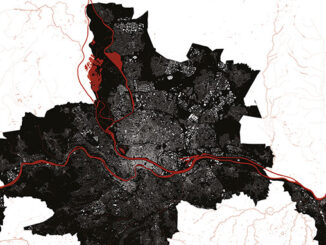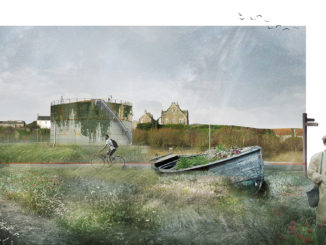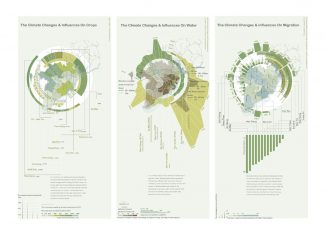Winner of 2021 WLA Awards – Student Awards – Merit Award – Concept Design
In the 21st century, hydroelectric dams are no longer highly efficient and become expensive to maintain. Such intervention of rivers is usually accompanied by ecological problems such as blocked fish migration, siltation in the upper reaches, and desertification in the lower reaches. All of these motivate us to imagine how the removal of these infrastructures can reduce the huge downstream impact of dams, especially in an era when hydropower is no longer indispensable.
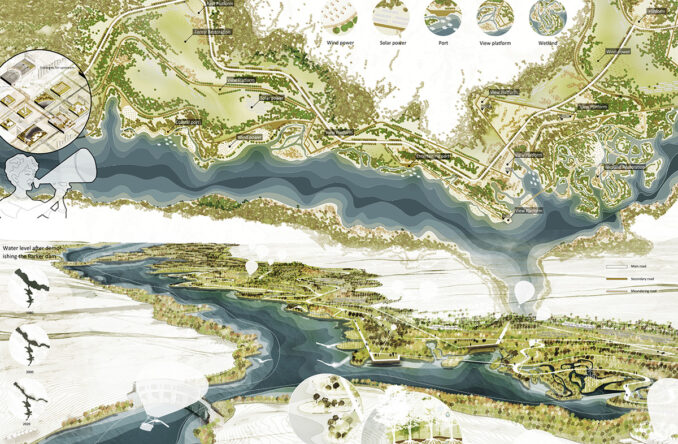
In the global trend of dam removal, we focus on the dams of the Colorado River. Over many years, the movement of this river has carried huge amounts of sediment, which has deposited and formed a 7,800-square-kilometer delta. The delta has been traditionally the most fertile agricultural region in northern Mexico. At the same time, the interaction of river flows with ocean tides creates a dynamic environment that supports fresh, brackish, and saltwater species. However, after the construction of water conservancy in the 20th century, dams disrupted the distribution of water resources, causing rivers to dry up and crops to decrease. It also leads to the loss of habitat around the waterways, the declining carrying capacity of wetlands, and the disappearance of creatures.
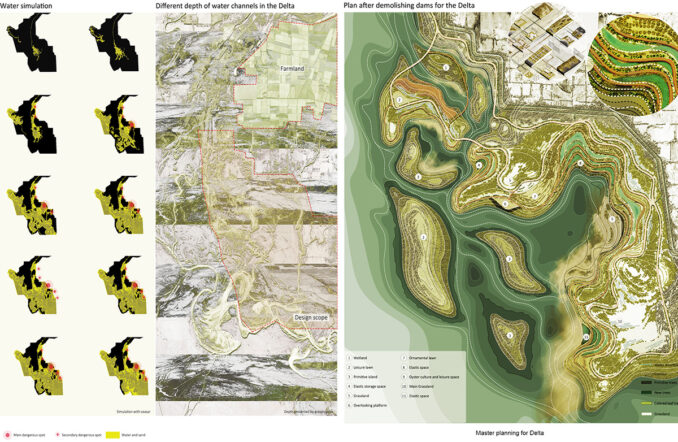
This project imagines boldly, in the post-dam era, how to deal with the problems of energy loss, sediment release, and river scouring caused by the phased dismantling of the dam. The process of settlement succession in two main sites, the river channel at the dam and the downstream delta, is also discussed. The essence of dam removal is the redistribution of silt, water, and energy on the site. This project divides the material circulation of the site into the disposal of the upstream sediment after demolition, the distribution of the released water, and the use of wind energy and electricity. The ultimate goal of this project is to restore the natural reproduction and ecological environment of the river, restore the natural sedimentation process and the flow of nutrients, improve the single terrestrial agriculture model of the delta, and reduce the safety risks of the dams.
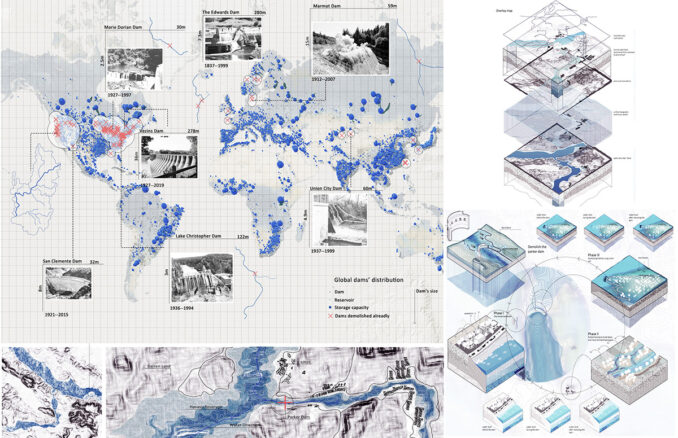
Once the dam is removed, the lake above it will greatly shrink, exposing the fertile land. The exposed soil is rich in nutrients and water, making it the best place to develop biological habitats. In order to protect soil moisture and restore the upstream ecology, the whole land is divided into three parts: restoration forest, activity space and wetland. In addition, infrastructure for generation of wind power and solar power has been set up along the river banks and grasslands, respectively. It is hoped that by taking advantage of the new fertile land, human and nature will be balanced to some extent.
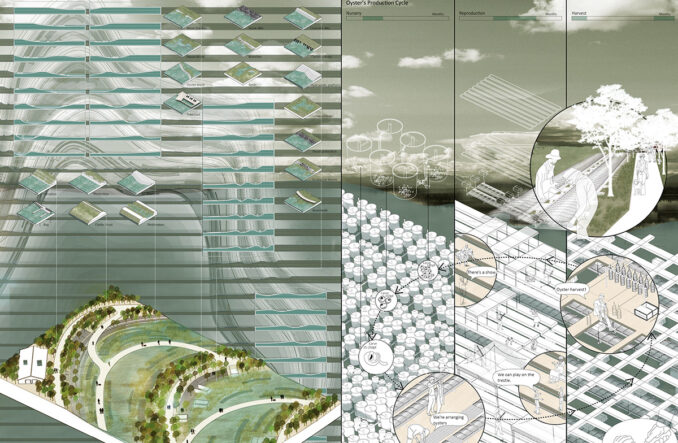
Also, this project determines the sequence of flooded areas with Ceaser, a simulation software for river flow. In 2020, a large amount of water flow will wash out, and in 2026, the river will overflow with seawater, creating a suitable living environment for oysters. The second step is terrain reshaping and oyster farming. By reshaping the topography of the retention ponds, the fertile silt brought by the flow is gathered, water is stored for irrigation, dryland agriculture is partially transformed into oyster farming, and the water elasticity of the site is increased. As a result, the ecosystem of the lower reaches will recover gradually.
During this project, I realize the conflicts between human needs for water resources and the river ecosystem and recognize the feasibility of balancing them via landscapes. During the process of returning to nature, water and land are no longer constrained by humans but are guided and adapted by humans to maximize their potentials. The study of the Colorado River will not be unique but can be generalized to global problems between humans and rivers. Through this project, we look forward to the sustainable development of humans and rivers.
After Dam – The rebirth of the Colorado river
Student: Chen Mao, Beijing Forestry University

